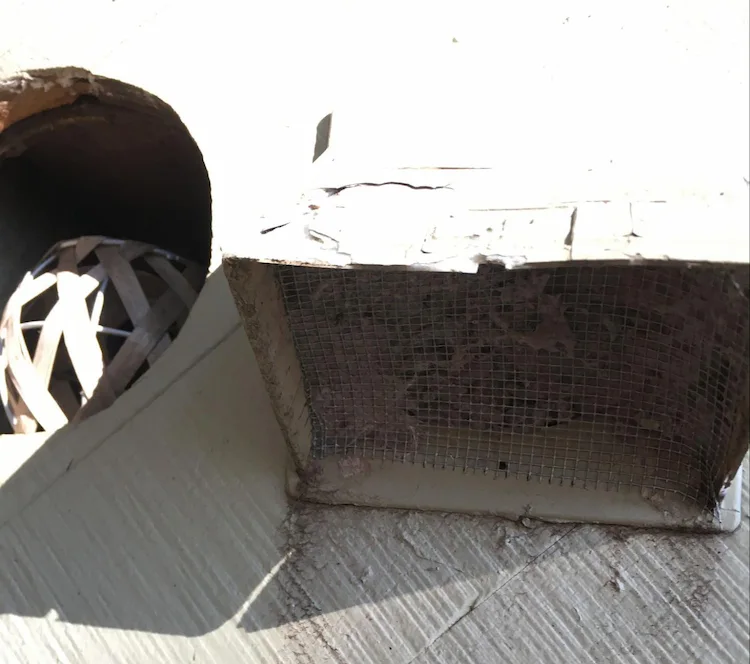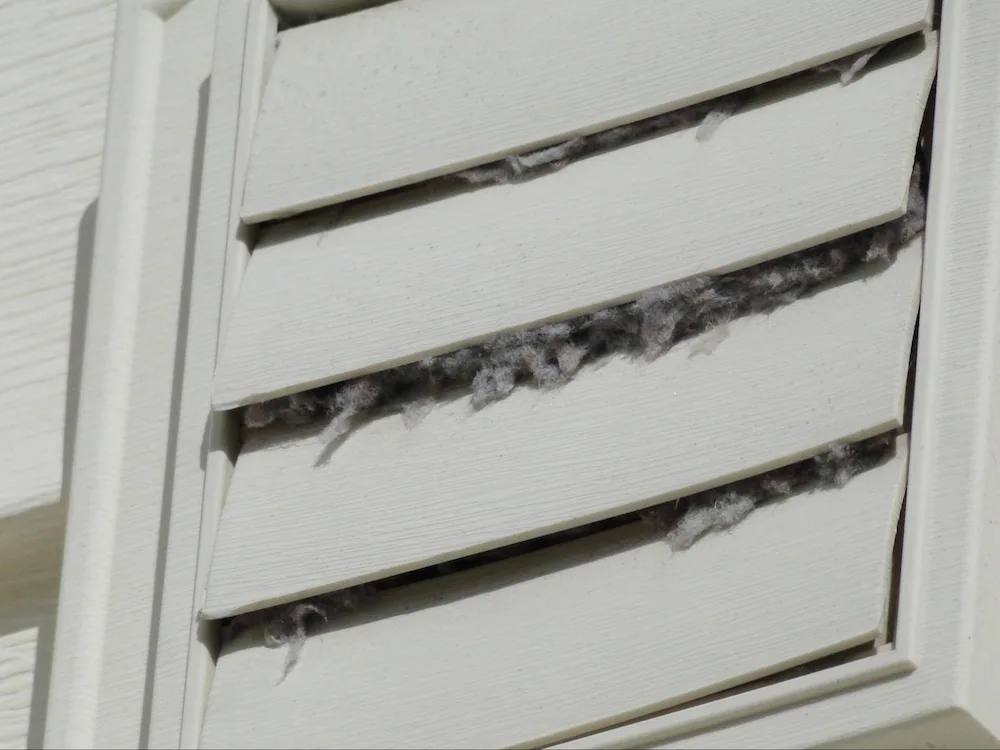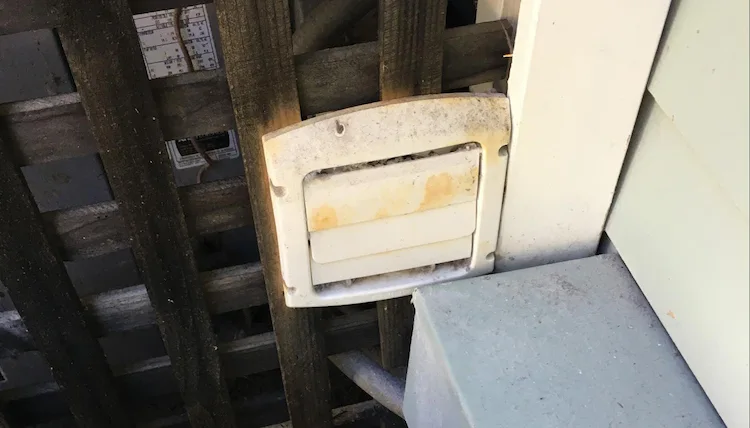Appearance
Dryer Vents
Bottom line
Minimize highly combustible lint accumulation near the dryer vent outlet. Vents should be made of metal materials and self-close when not in use or have a downward facing metal hood to mitigate ember exposures.
Overview
All dryer vents are susceptible to lint build which in turn is vulnerable to ember ignition, so it is important to maintain the vent opening area to be free of lint or protect the dryer vent opening from embers. Plastic dryer vent covers installed on a wall with combustible siding would be vulnerable to flames should siding ignite or accumulated lint ignite via an ember exposure. The resulting fire could carry an exterior fire into the structure. A good dryer vent option is a hinged metal flap or metal louver that self-closes when the dryer is off and air flow stops.
Debris present
In this context, debris is primarily lint accumulated in dryer vent mesh screens. Lint is a dry, flashy fuel that can be ignited by embers during a wildfire. In fact, lint is often collected and used by backpackers as a lightweight fire starter. Mesh screens with small openings are most likely to accumulate lint and, setting aside wildfire risks, present a safety and maintenance challenge because it can cause a dryer to overheat if the lint accumulation blocks the vent. Dryer vents must be free of debris and maintained clean.
\
 1/16 inch metal mesh screen with lint accumulation. Unlike attic and crawl space vents, dryer vent screens should be 1/4 inch or larger due to the potential for highly combustible lint accumulation.
1/16 inch metal mesh screen with lint accumulation. Unlike attic and crawl space vents, dryer vent screens should be 1/4 inch or larger due to the potential for highly combustible lint accumulation.
 Plastic louvered dryer outlet. Note accumulation of lint at outlet - indicative of the need for maintenance at the outlet.
Plastic louvered dryer outlet. Note accumulation of lint at outlet - indicative of the need for maintenance at the outlet.
Dryer vent type
There are three main types of dryer vents.
Mesh screen
These can come in a variety of materials, sizes, and styles, and are the most common type of dryer vent. A mesh screen features interlaced material that creates an aperture through which dryer exhaust exits the interior. Most of the time, the primary purpose of mesh screens is to prevent animals, insects, and objects from getting into your dryer exhaust ducting.
Louver
Typically, louver vents have three or four slats on hinges that open when the dryer is operating and self-close when the dryer stops. These can resist lint and debris accumulation better than a mesh screen option. They are typically made of hard plastic or metal. Plastic vents pose a wildfire risk if installed on combustible siding because they can ignite and carry an exterior fire into the structure.
 Hard plastic louver dryer vent
Hard plastic louver dryer vent
Flap
Similar to louver vents, flap vents feature a single panel on a hinge that opens when the dryer is operating and self-closes when the dryer stops. These are more effective in protecting the dryer duct and outlet area from embers. They are typically made of hard plastic or metal.
A hard plastic flap-style dryer vent
Dryer vent material
Metal
Includes dryer vents made from stainless steel, copper, galvanized, and aluminum. Metal is the best option to resist embers. It can be detected by touching the vent, listening to the sound it makes when tapped, and feeling the reaction when attempting to bend it
Plastic
Plastic vents pose a wildfire risk if installed on combustible siding because they can ignite and carry an exterior fire into the structure. Many louver and flap vents have a plastic sleeve that connects to the dryer exhaust hose through the wall, which presents a flame impingement risk. It can be detected by touching the vent, listening to the sound it makes when tapped, and feeling the reaction when attempting to bend it.
Other combustible
Includes wood and other types of combustible materials besides plastic (see above).
Other noncombustible
Includes fiber cement and other materials besides metals that cannot ignite and spread flames.
Mesh screen size
The size of a dryer vent’s mesh screen makes it more or less likely to accumulate lint and other debris. Larger is generally better with 1/4 inch being the sweet spot if it is not possible to replace with an alternative vent type.
Hood present
- Hoods provide extra protection from embers that strike the wall and cascade down
- Like the other vent elements, plastic protects against embers but not flame
- Only metal hoods for replacements
Height to vent
Hoods are most effective on vents that are less than 4ft off the ground